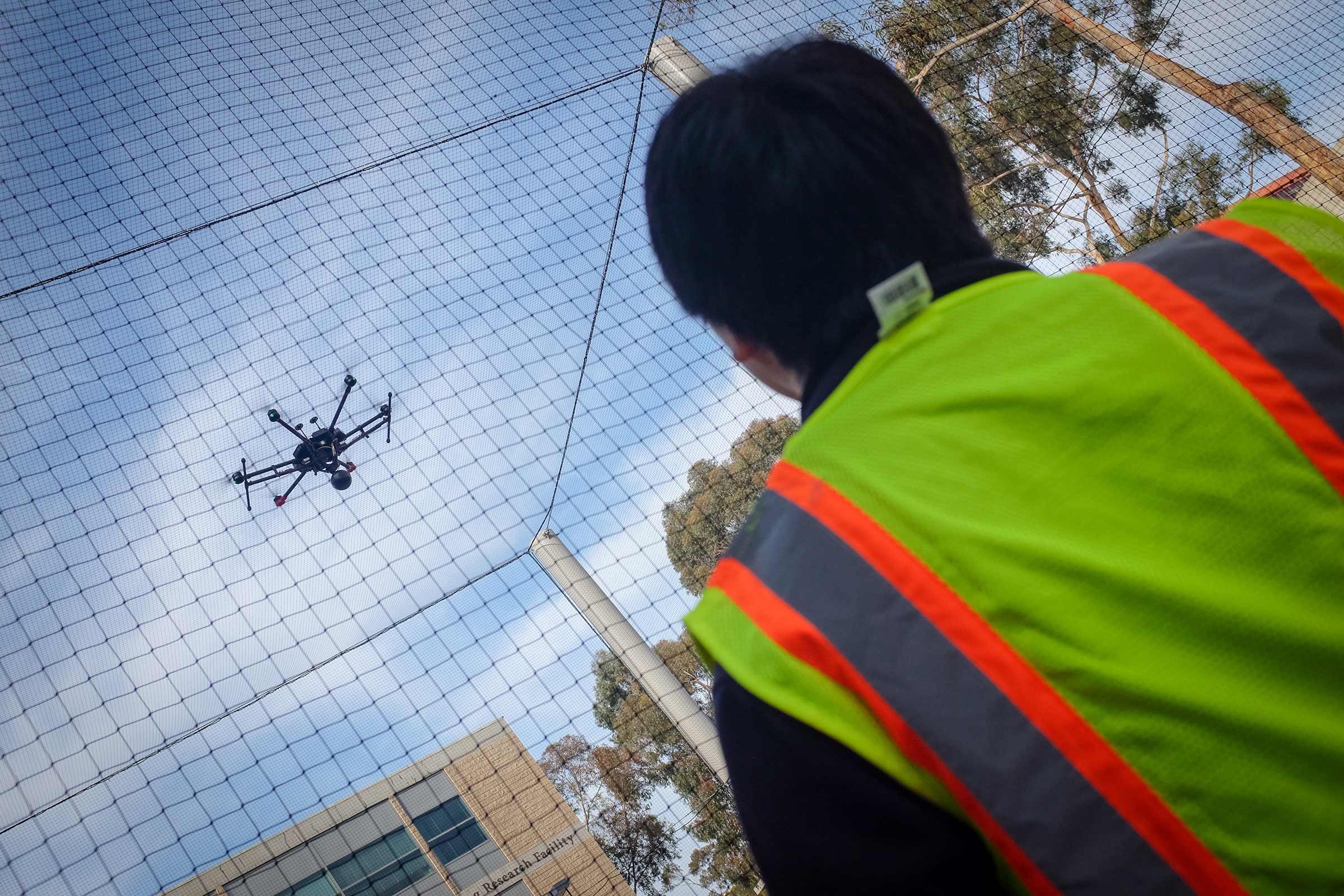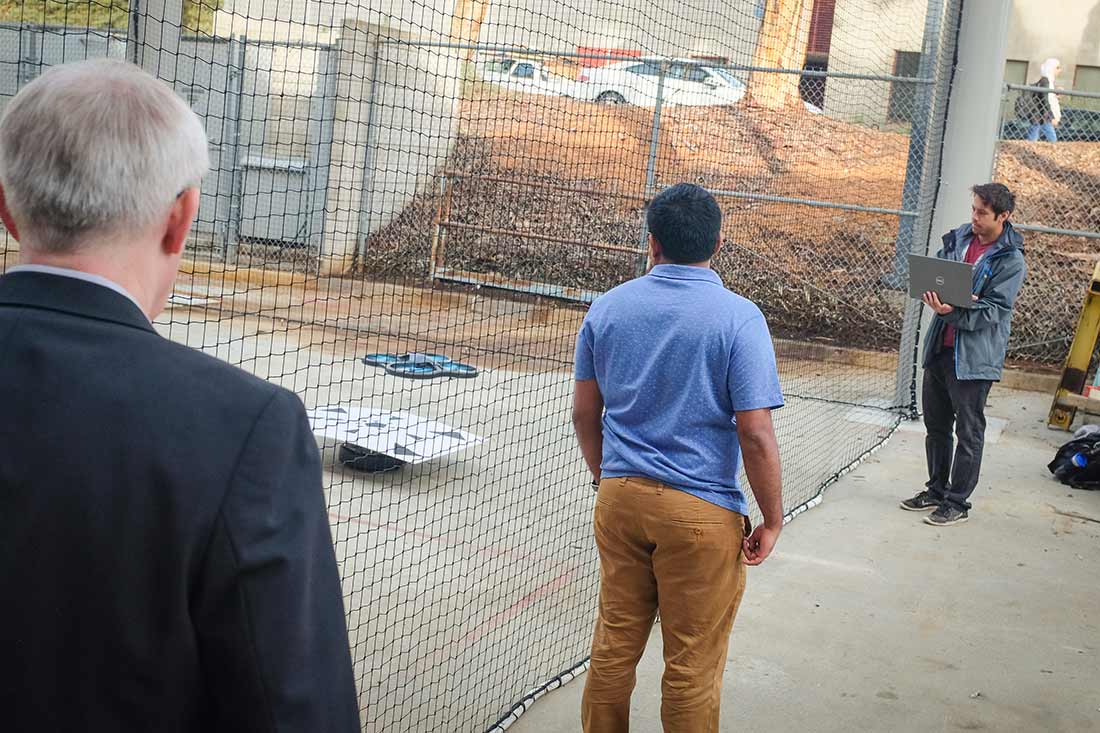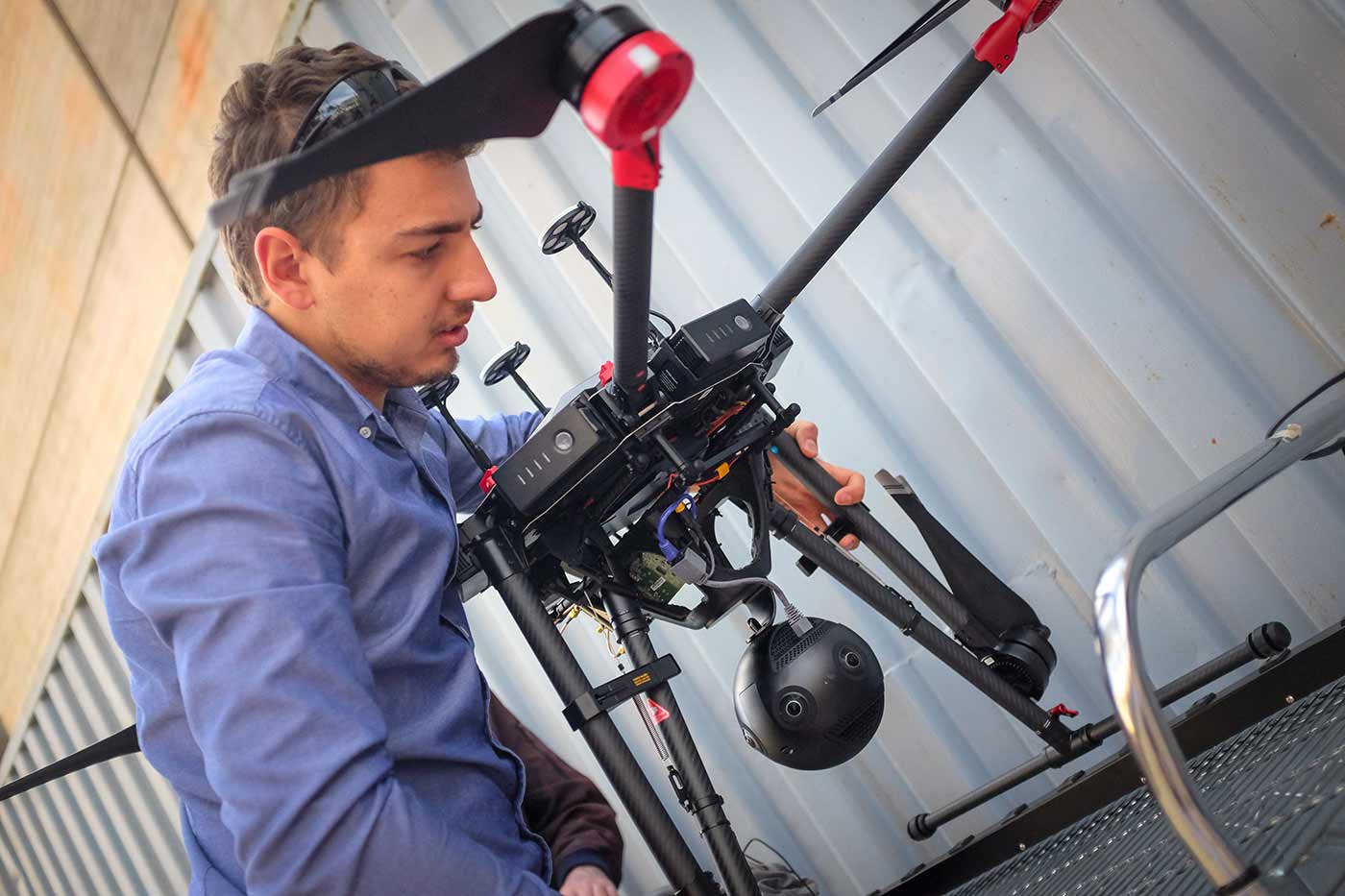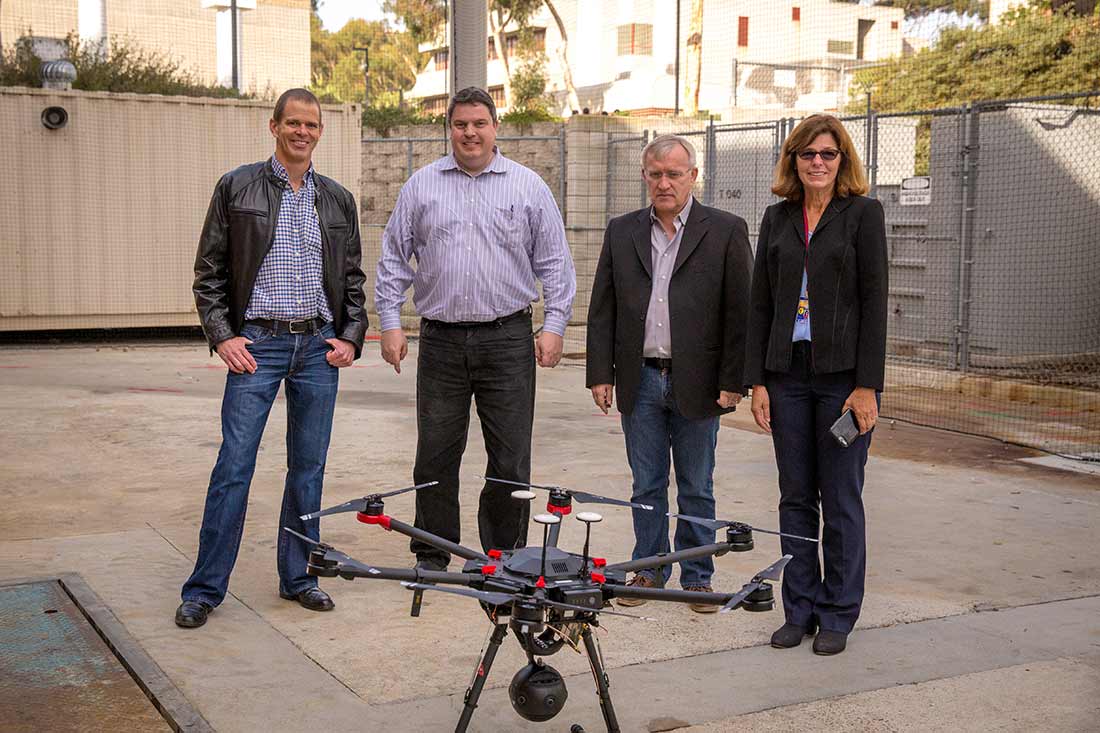Acting Student and Bioengineering Alumna Awarded Soros Fellowship for New Americans
Awards & Accolades
By:
Published Date
By:
Share This:
Campus opens new aerodrome to fly and test unmanned aerial vehicles

Photos by UC San Diego School of Engineering
One drone landed on a moving Roomba-like robot while being guided by arm gestures. Another streamed a live, high-definition, 360-degree video feed as it flew overhead. These were some of the demos last week that helped inaugurate the first open-air aerodrome for unmanned aerial vehicles here on campus.
The aerodrome’s inauguration was the first step in what engineers hope will be a new era for drone research at the University of California San Diego. One of their goals is to create a living laboratory for unmanned aerial vehicles by bringing together researchers from across campus, including computer scientists, structural, mechanical, aerospace, electrical and computer engineers and scientists at the Scripps Institution of Oceanography.

(L-R) Contextual Robotics Institute Director Henrik Christensen and mechanical engineering graduate students Aamodh Suresh and Aaron Ma, from the lab of Sonia Martinez and Jorge Cortez, monitor a demo at the aerodrome opening.
“We are bringing everyone together so that one plus one equals substantially more than two,” said Henrik I. Christensen, a professor of computer science at the Jacobs School of Engineering at UC San Diego and the director of the campus’ Contextual Robotics Institute.
The institute oversees the new drone testbed, which is located next to the UC San Diego Powell Structures Lab. It is made up of a 30-foot-tall mesh cage over a 2,500-square-foot outdoor area.
The facility will primarily be open to university research. Projects that could take flight in the new aerodrome include everything from quadcopters built by undergraduate students to balloons designed to monitor conditions inside hurricanes.
“We expect to see new research results on control of swarms of small UAVs and on the coordination between humans and robots,” Christensen added. “We will also test entirely new vehicles for long endurance flights.”
The aerodrome is opening not only in response to new University of California regulations governing the use of drones in residential areas but also in response to demand from researchers on campus. The testbed will be equipped with motion capture devices, which will allow researchers to test the quality of their flight control algorithms and will provide ground truth data for all drones.
A second phase will expand the testbed to an indoor 100-foot-tall area, connected to the outdoor testing cage. The expansion, which should take place next year, will result in a unique facility in the United States.
“The opening of the aerodrome is exciting because it enables drone research in a controlled environment, supporting experiments with a multitude of autonomous platforms and payloads as well as control, navigation, guidance and communications strategies,” said Falko Kuester, a professor in the Department of Structural Engineering who leads the DroneLab at the Qualcomm Institute at UC San Diego.
Kuester and his team are using drones to assess damage after natural disasters—both real and simulated. For example, they developed drone-based imaging techniques to map full-scale buildings before, during and after earthquakes and fires. They subsequently tested these on the world’s largest outdoor shake table here at UC San Diego. The drones acquired images and videos of a six-story building to document damage as a simulated earthquake and then a staged fire unfolded. Powerful algorithms then turned the data the drones collected into detailed three-dimensional models that researchers could literally walk through in a Holodeck-type environment to look for damage.

Dominique Meyer, a graduate student from Falko Kuester’s lab, prepares one of the team’s drones for a demonstration at the opening.
“The ability to develop, test and refine drone-based imaging techniques is critical for our rapid response team,” said Kuester. The team deploys around the world to assist with post-disaster reconnaissance and data collection, as well as the study and preservation of sensitive world heritage sites and ecosystems. They traveled to Puerto Rico after Hurricane Maria and to Mexico after a series of earthquakes hit the country in September.
“Being able to develop and test indoor-outdoor flight transitions, under the broad range of scenarios that can be created within the aerodrome is a game changer for us and will ultimately help with saving lives, following disasters,” Kuester said.
Another research team, led by professors Jorge Cortes and Sonia Martinez from the Department of Mechanical and Aerospace Engineering, is working to develop algorithms that allow swarms of robots and drones to work together. The swarms could be used in a wide range of situations, including search and rescue missions, environmental monitoring, and pickup and delivery in transportation. Cortes and Martinez also develop algorithms that allow elements of the swarm to sense, estimate and plan. Robots and drones can then talk to one another to determine the most efficient way to deploy.

(L-R) Contextual Robotics Institute project manager Timothy McConnell; Executive Vice President, Technology Qualcomm Technologies Matthew Grob; Contextual Robotics Institute Director Henrik Christensen; and UC San Diego facilities senior project manager Rita Johnson pose with a drone inside the new open-air aerodrome.
The algorithms allow one person to control the swarm, acting as somewhat of an orchestra conductor. As a first step, researchers interfaced with the swarm with an app on a tablet. They are now working on controlling the swarm via gestures processed via a motion-tracking bracelet.
The new UAV aerodrome is in part supported by funds from Northrup Grumman and Qualcomm—building on a long-standing collaboration. Qualcomm and UC San Diego created the first FAA-approved sites for drone technology development and testing in early 2016 and Northup Grumman hosted its 2016 Quad Cup Innovation Challenge on the UC San Diego campus.
The campus continues to explore other industry partnerships. The associated research is currently supported by the Army Research Laboratory, Army Corps of Engineers, National Science Foundation (NSF), National Institutes of Standards and Technology (NIST) and Defense Advanced Projects Agency (DARPA).
“There is today a shortage of engineers that have experience with drone technologies,” Christensen said. “The aerodrome will allow us to fill that gap.”
Share This:
Keep up with all the latest from UC San Diego. Subscribe to the newsletter today.